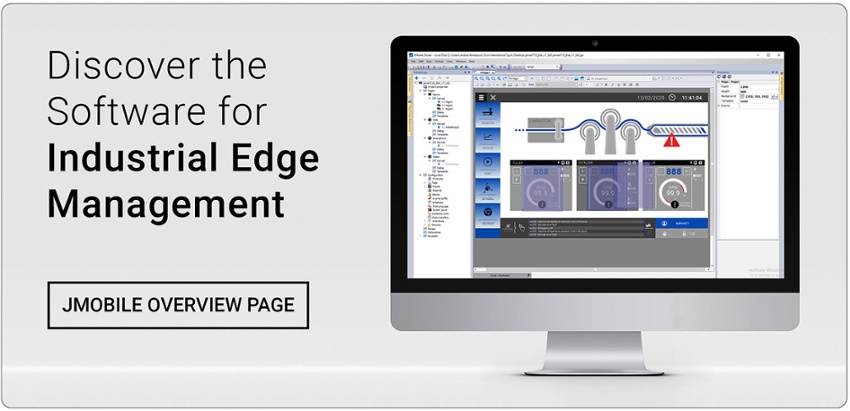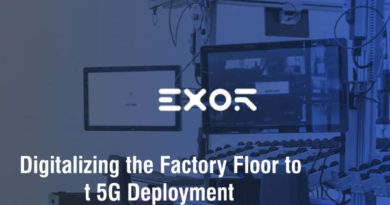HOW DATA SOLVES MANY INDUSTRIAL PROBLEMS
This article will discuss:
- Digital transformation technologies and their roles in the digitalization of the factory floor
- The application of data analytics and analytical technologies to solve complex industrial problems
- Optimizing the production process through data-driven policies
Before the introduction of Industrie 4.0, industrial data was collected and used to support the inventory management process, calculate overall equipment efficiency, and determine revenue generation numbers or profit. With the advent of Industrie 4.0, capturing factory-floor data has become one of the most important aspects of industrial operations. Captured data is required in the digitalization of the factory and in implementing Industrie 4.0 business models.
The digital transformation in the industrial sector
Optimizing industrial processes starts from understanding the current status of the production line or factory-floor operations. Although throughput data, operator working hours, and scrappage rates have been used to define industrial processes, they are inadequate for developing predictive analysis models or implementing a data-driven plant performance optimization strategy.
To better capture data from diverse industrial operations, the application of digital transformation technologies is required. With digital tools, every aspect of a factory’s operations can be measured, and the captured data can be analyzed to gain further insight into these processes. Digital tools refer to technologies that can capture, store, or process data. Digitalization of the factory floor involves the inclusion of: IIoT devices to monitor equipment, edge devices to store and process information, and the everyday personal computer to continuously assist operations.
Advancement in data-capturing technologies and the equipment in industrial shop floors means that the modern factory floor is now flush with data due to the deployment of digital transformation technologies. Data visualization solutions such as web HMIs help ensure visualization of captured or analyzed data becomes a more simplified process. While digital transformation has solved the data-collection challenges that the industrial sector faces, it has brought about a new challenge: what do we do with all these large data sets?
Deploying data-analytics technologies to solve industrial problems
Statistics show that approximately 73% of captured data goes unused. In many cases, the underutilization of data is due to the absence of a clear vision of which processes need to be optimized and having no defined plans when deploying data-capturing tools. Thankfully, Industrie 4.0 business models or concepts provide clear-cut ideas concerning the application of factory-floor data.
Captured data from the digitalization of the factory can be deployed to develop an automated predictive analysis system for maintaining industrial assets, analyzing plant performance levels, and delivering the benefits of Machine as a Service (MaaS) to grow revenue. Complete synchronization and visualization of industrial operations is another important aspect of the digitalization of the factory and its industrial processes.
Digital transformation visualization tools provide the support for visualizing data from every aspect of a production process. An expansive industrial cloud platform provides a centralized location for storing data from inventory management software, supply chain and logistics software, demand forecasting software, and machine-utilization data. The collation of data within a centralized platform enables extensive analysis when developing master production plans and provides decision makers with a single source of truth and insight for making complex decisions.
An even more important use of industrial data pertains to validating and testing new ideas before implementation. Facility-wide data collected from expansive industrial processes are fed into digital-transformation tools such as a digital twin software to create a virtual mirror of the entire process. Unlike a 3D visualization application, the digital twin facilitates the transfer of data in real-time. By this method, evaluations on the effect of introducing changes to the facility can be evaluated before any physical implementation.
For example, the digital twin facilitates capacity-planning evaluations using demand-forecast data, machine-utilization data, operator-work-hours data, etc. to determine the number of assets, resources, and space that will be needed when expanding operations to meet increased demand.
Another important use of industrial data is in optimizing production schedules in real-time. Traditionally, schedules stay static and only change according to operator availability. The old way of scheduling didn’t account for risks such as unexpected machine failures, instant increases in demand, or challenges with inventory availability. Simulation modeling and scheduling software, which is a digital transformation tool, guarantees risk-based scheduling. It accounts for all changing data that comes from the shop floor to create flexible real-time schedules.
The agility that risk-based scheduling provides ensures operators do not fly blindly into complex production scenarios while optimizing the production cycle. The digital twin can also serve as a single pane of glass for all the industrial data captured from the factory floor. More data from industrial processes leads to an even more accurate digital twin of processes or of a facility that ensures optimized results when evaluating different scenarios that affect the production line.
Optimizing production processes through data-driven policies
One of the major concepts of Industrie 4.0 is the application of data-driven policies to optimize industrial processes. With digital-transformation technologies and their ability to capture factory-floor data – including data coming from the deepest parts of a facility – anyone can develop data-driven strategies to optimize specific processes.
Factory owners can go outside the box of the diverse business models that Industrie 4.0 specifies to deploying data in innovative ways that solve specific operational problems. It is your facility, your data, and your factory’s challenges that put you in a better position to decide the best way to leverage captured data to simplify daily operations, reduce scrappage, or drive revenue growth.
The result of deploying a digital transformation strategy always includes more awareness of your factory status and cheaper alternatives to evaluate complex operational challenges before implementing a solution, thus saving enterprises the energy and cost of implementing solutions that could spell financial failure.
Conclusion
The digitalization of the factory is much more than just an initiative to capture data. Digital transformation technologies have matured and reached the stage of assisting managers with solving the most complex challenges that they face when delivering quality products, high service levels, and growing revenue.





